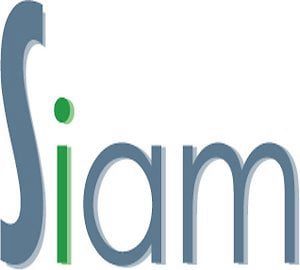Poison control centers and update requirement?

Poison control centers and update requirement? – Notices are required to keep submitted information up to date at all times. Existing notices may need to be updated. Relevant changes leading to the update obligation are described in Annex VIII of the CLP Regulation.
CLP Article 45 and Annex VIII require all economic operators placing mixtures with health or physical hazards on the market in the EU – including Norway, Iceland and Liechtenstein – to submit a poison notification. By definition, “placing on the market[…]” means delivery or making available, with or without payment, to a third party. Import in the sense of this definition is “placing on the market” (Article 3(12) REACH).
Deadline for industrial use: January 1, 2024
“Placing on the market” is defined as the manufacture, import and trade of mixtures. While there has been a reporting requirement for hazardous mixtures for professional and end-use since January 1, 2021, the reporting requirement for mixtures for purely industrial use will apply from January 1, 2024. must also ensure that the data submitted are always up to date.
Mandatory updates?
An update of an existing notification must be made when relevant changes occur according to the regulations. This, of course, must be done before the modified mixture is placed on the market. The current guidance on harmonized emergency health care information – Annex VIII of the CLP Regulation – provides information on all scenarios that require a notification update.
Reasons for an update?
These include changes in trade name or classification related to health or physical hazards, and the addition of new toxicological information. Changes to the formulation of a mixture may also require an update. Changes to the mixture color information, pH, packaging type or size, and any spelling errors in the product labeling that need to be corrected also result in the update requirement.
Formula changes and the UFI
The Unique Formula Identifier (UFI) is an additional labeling element and is linked to the formula of the mixture. When there is a change to the components listed in the notification – whether by addition, deletion, or substitution – the UFI changes and the notification must be updated. An update is also required if there is a deviation from the standard formulas in Part D of Annex VIII of the CLP Regulation. If a change in the composition of a mixture could result in the mixture no longer being classified due to health or physical hazards, the notification requirement does not apply. Please note that also in this case a one-time update of the notification is required.
However, if the changes concern trade name information, new packaging, new toxicological data, classification of ingredients or contact details of the legal entity, the UFI remains valid.
About concentration
Annex VIII of the CLP Regulation specifies concentration ranges that apply to changes in the concentration of existing constituents. An update of the notification is only required if concentration changes exceed these ranges. It should be noted that the permissible deviation always refers to the initial notification. This is to prevent successive changes from causing update notifications to be omitted. It is not necessary to update the notification by changing the concentration of constituents that do not need to be included in the notification (e.g., non-hazardous constituents present in concentrations less than 1%).
Influences of raw material suppliers on downstream user reporting
If mixtures from a supplier are part of a downstream user’s reported mixture (mixture in mixture; MiM), changes made by the supplier may affect the downstream user’s reporting for their mixture. Mixtures of raw materials can be identified by the supplier’s UFI or, if the supplier has not yet identified a UFI, by the information in the supplier’s Safety Data Sheet (SDS). Changes in the composition or hazard potential of MiMs may result in the requirement of a new UFI for raw materials. In this case, an update of the notification by the downstream user with a new UFI is required.
No UFI from the supplier?
If a notification is based on MSDS data and there is no supplier UFI, the changes may not be apparent in the MSDS. Therefore, the downstream user’s original notified formula remains the same and the notification is not updated. If the MiM is present in the downstream user’s mixture at very low concentrations, a change in the composition of the raw material mixture may not require an update by the downstream user. For example, if the supplier changes a non-hazardous component in the MiM that is present in the downstream user’s blend at less than 1%, that component will not be mentioned in the downstream user’s message. Therefore, the MIM’s formula change does not affect the downstream user’s initial report. However, the reporter often does not have accurate information about the concentrations present in raw material mixtures. Therefore, in case of doubt, a change in MiM composition is usually accompanied by an update of the downstream user’s report.
Change of one or more suppliers
When a resource supplier changes, companies may be required to update their reports depending on the situation. If the resource is a fabric, no update is required. Also, if there are multiple suppliers or the supplier changes, it may be possible to go to a comprehensive UFI for raw materials. However, this requires that the commodities have an identical composition and risk profile. If the composition of the raw material changes when there is a change of supplier, the same procedure must be followed for a changed formulation and an update with a new UFI must be submitted.
Completion
The requirement to update poison control center notifications presents additional challenges for affected companies, but is essential to improve emergency response. The UFI ensures that products with different formulas and the same trade name are clearly identifiable because they may be in circulation at the same time. In doing so, the UFI ensures that poison control centers can provide accurate, prescription-based advice, preventing mistreatment.
Source: European Coatings
Also Read: OECD eChemPortal updated with latest ECHA data
Reservation
This information has been compiled with the greatest possible care, in some cases from different information sources. (Interpretation) errors are not excluded. No legal obligation can therefore be derived from this text. Everyone dealing with this subject has the responsibility to delve into the matter!

Trackbacks/Pingbacks